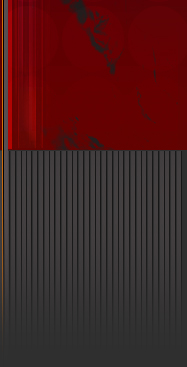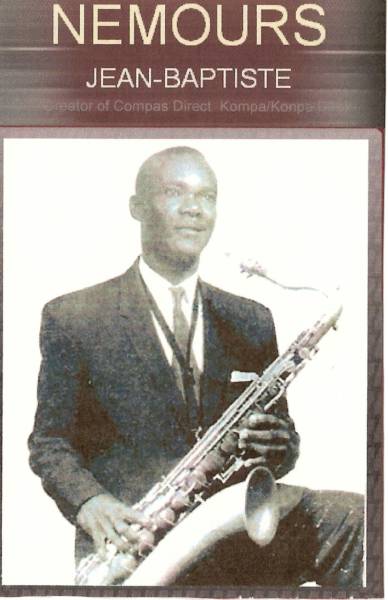The Creator of Compas Direct Kompa/konpa Dirèk
NEMOURS JEAN-BAPTISTE
February 2, 1918 - May 18, 1985
61 Years of Konpa
PEOPLE HAVE BEEN ILLEGALLY ENTERING OUR WEBSITE. WE ARE TRYING TO FIX IT CURRENTLY. PLEASE ENJOY THE WEBSITE.
Third child of a family of four children, Nemours was born on February 2, 1918, and died on May 18, 1985, in Port-au-Prince, Haiti. After the premature death of his parents, Lucia, dressmaker, and Clément Jean-Baptiste, shoemaker, Nemours and his brothers and sister, André, Monfort and Altagrace were entrusted to their next of kin. After some studies at the two parochial schools, Jean-Marie Guilloux and Saint Louis de Gonzague, Nemours was on his own at an early age and tasted some difficult moments in his life. He did some insignificant jobs to meet his needs. Having become a barber, Nemours could find without doubt, in his clients and the barber shop, the audience and the ideal place to discuss his love and express his talent for music. A gift received by chance was his first sponsorship through a friend, Antoine Duverger. Owner and banjo player, Duverger decided to entrust his beloved banjo to Nemours to avoid the parental reprimands children “of good families” in the beginning of the century did not play music. Nemours took advantage of this confidence and learned to play the banjo by himself. Luck was on his side, when Duverger did not respect one of his commitments to the Guignard Brothers. Nemours replaced him. The performance was a success and brought him back $30.00 and his recruitment by the Guignard Brothers. From this date, Nemours devoted himself completely to music, animating organized parties through the country; a career of about twenty-five years had just started. During one of his tours, he met Marie Felicité C. Olivier. They were married on September 28, 1946 and had three children Marie-Denise who died at the age of two (2) years, Yvrose and Yves Nemours, Jr.
The beginnings of Nemours’ career consisted especially of tours abroad throughout the country enlivening parties. Morever, on Saint Ann’s Day, July 26, 1955, Nemours created the rhythm that was to become the “Compas” in forming his own musical group, Conjunto International. The original band members were Julien Paul, Monfort Jean-Baptiste, (Nemours’ brother), Anilus Cadet, Mozart and Krutzer Duroseau, and for one month Wébert Sicot who was soon replaced by Frank Brignol. But, that was not his first attempt at being a band leader. Previously, he had led contemporary groups such as Anacaona, Jazz Atomique, and Jazz Atomique Junior.
Weber Sicot was never a member in Jazz Atomique and in Atomique Jr. Maestro Nemours Jean-Baptiste never played guitar in Jazz Atomique, he always played his saxophone. Also, Louis Lahens was not a member in “Ensemble Aux Calebasses”, therefore he did not sing “Calebasses Kanpe.
In 1956, the career of the artist took a new direction when he met his first promoter, Jean Lumarque, owner of a contemporary club, “Calebasses” which means “Gourds”. Jean Lumarque organized the first tour overseas for Nemours and his group, accompanying them to the United States of America and Mexico. However, a short time after, Nemours had to leave Lumarque for Senatus Lafleur, owner of another Club, “Palladium”. Nevertheless, it was again Jean Lumarque who, in 1961, brought the group to the United States and on July 5, during a party at the headquarter of the United Nations, Nemours received a plaque. After another back and forth from Palladium to Calebasses, Nemours and his group were named successively “Ensemble aux Calebasses”, “Ensembe Nemours Jean-Baptiste”, “Ensemble Compas Direct”, and again “Ensemble Nemours Jean-Baptiste” were hired by René Marini, owner of “Cabane Choucoune”, where they performed from 1962 to 1970. During this period in 1963, Nemours and his group, participated for the first time in a carnival parade, at the public request. It is to be noted that Nemours suffered from glaucoma. In 1967, his opthalmologist had to remove one of his eyes during a surgical intervention in a hospital in Port-de-Paix.
Nemours stayed for two years (1970-1972) in the United States of America and performed in some clubs such as Chateau Caribe (Manhattan) and Canne-à-Sucre (Sugar Cane) (Corona, Queens). When he returned to his native country in 1972, he took charge of a new group, the Top Compas, rebaptized “Super Combo de Nemours Jean-Baptiste” and toured in Guadeloupe, from May to December 1973. In May 1974, a promoter from Guadeloupe, Hubert Romain, had them tour in turn through Guadeloupe, Martinique, France and then Guadeloupe again to return to Haiti in November 1974. Their transit in France, in September 1974, was an immense success prompted by the song “Ti Carole”, that was a hit on “Radio Télévision France Inter” for six months. When he returned to Haiti in November 1974, the group went back to “Cabane Choucoune” until its dissolution in 1979 with the departure to the U.S.A. of its founder, Wagner Lalanne.
In 1980, about a quarter of a century after the launching of his immense career, Nemours found himself a lone musician. Fortunately, Eddy Zamor, radio personality and producer during the 60’s in Haiti, having become a promoter of music in the U.S., was able to come to Nemours’ rescue. He sponsored an evening for Nemours’ twenty-fifth anniversary of “Compas” and the event was celebrated in great style with the group “Skah Shah” at the Club “Olympia Palace”. The evening was, in some fashion, a tribute crowning the great career of Nemours Jean-Baptiste. His next attempt to play in the U.S.A. in 1981, this time accompanied by a long time musical rival, Wébert Sicot, was destined to fail. Nemours became seriously ill and had an operation in New York in Elmhurst Hospital, Queens. He passed the last four years of his life in Haiti, fighting against prostate cancer and blindness. In spite of the plea to the contrary of his wife and children, he chose to die in his country, always saying when he died his value would be recognized.
Nemours and the Compas Direct
Until the mid point of the twentieth century, the needs of the Haitian public in live musical presentations animation had been satisfied mainly by the troubadours and the cadence “tipico” coming from the neighboring Republic. This cadence and/or the Hispanic groups dominated the major part of our public festivities or/and much of the private. The beginnings of Nemours in 1955, and 1956, have been marked by this cadence that has allowed him to capture the heart of the public. However, Nemours never appreciated this colonisation of the haitian musical market. On one side of the haitian border, the Dominican and the Cubans lived their music, on the other side our brothers were humiliated by the foreign provenance of these two groups.
Inspired in some way by this national feeling helped by his intelligence, Nemours has given to the Haitian people their proper cadence: the “Compas”. After the launching of his career, he has not stopped with the banjo skills, he had learned le saxophone and the guitar.
Another attractive future of Nemours’ public image was his profuse creativity. At the peak of his career, he pampered his public regularly with a new composition. Almost every Saturday, his fans were waiting for him at Rex Théatre and they were never dissappointed either by the content and or the form. The Haitian ladies, regularly the object of satire by the musicians, were Nemours’ favorites. There were hits such as “aprann renmen”, “rob antrav”, “Solange” not to cite others. As for the “Compas”, his dear child that he brought to live, he never ceased to predict its success and longevity. Hits such as : “Universal Compas”, “Vivre Compas”, “La Joie de Vivre” provide proof. For Nemours, the key to this success or longevity is to keep the rhythm or cadence as simple as possible.
Banjo player, guitariste, saxophonist, composer and band leader, Nemours Jean-Baptiste, was a complete artist. He has been for Haitian music what the Heros of his country were for Haiti. At his death, on May 18, 1985, he had passed a rich heritage to the Haitian musical market. The foundation created by Nemours constituted an inexhaustible source that has inspired and continues to guide the succeeding generations. Today still, a half century after the creation of Compas, the Haitian public never tires of dancing to the music of Nemours and the Compas.
OFFICIAL WEBSITE OF NEMOURS JEAN-BAPTISTE
(Approved by the Family)
As of yet, the Legal Family of Nemours Jean-Baptiste, has not created a Foundation.
We are not associated with any Charitable Organization, the MUSIC SCHOOL, the group of Nemours Jean Baptiste, Jr. of NEMOURS POULARD, and "FONDATION NEMOURS JEAN BAPTISTE - Ville De Port-Au-Prince, Ouest, HAITI, CANADA, North of America, Europe, Africa, Asia, and the other Caribbean Islands, or Anywhere.
ATTN: MOISE BLANCHARD & NEMOURS POULARD




